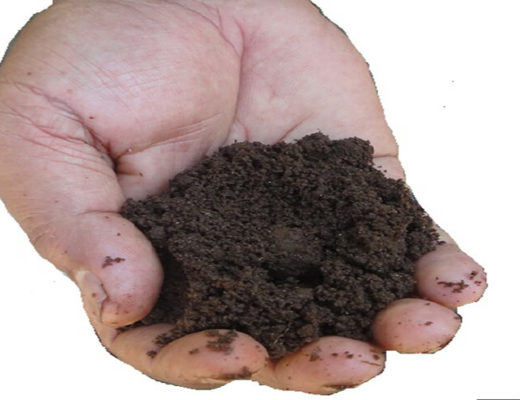Have you ever wondered how our environment has been enriched with so much beauty? ‘Weeping Willow’s the name coming from a legendary story is very interesting. The tree used to grow tall and straight. Two young lovers would sit and spend time under its shade. Unfortunately, both died before they went into wedlock. The willow trees were so distressed, that they dropped their branches in sorrow. The branches never straightened back adding an ornamental beauty of nature. Fantastically, you will find a number of benefits the weeping willow provides to our lives.
1. The origin of Weeping Willow
Willows belongs the Salix genus with about 400 species. China is the native country, but you can find them in the United Kingdom, North America, Canada, New Zealand, Africa and countries of the Northern Hemisphere.. They are deciduous in nature, ranging from shrubs to trees. The dwarf willows grow to 6 cm (2.4 in) in height. The tall typed weeping willows grow very fast at the rate of 8 ft per year. It has a profuse root system, although the stems are soft and break off in strong winds. A flowering weeping willow can grow up to 35 to 45 feet.
2. Kinds of Weeping Willows
The artistic willows got their names from the different kind and forms they take. Thus, there are known as pussy, black, gold, white, dwarf willows and corkscrew willows to name a few.
3. Favorite Environment of Willows
Willows also termed osiers love to grow in moist soils of the cold temperate regions. They are not fussy about soil type, in fact, cleans swampy lakes. They are strong in soggy, soils with sufficient nutrients but do not do well in drought. Willows adapt to anaerobic (low oxygen) level, so the roots of the plant actually remove the soil that are contaminated in the absence of enough oxygen. Willows create elegant around lakes, shores, pools, puddles and mud and wet environments. The leaves are slender and drop down. As most tree plants, the truck is quite thick with two layers of bark. As willows attach nostalgia and reminiscences one of legendary love, music and folklore, many love to spend time around the willow trees and feel nostalgic by the grace and charm it offers. As weeping willows spread out it is usually is cozy in open landscapes and act as shading the location.
4.Reproductive age
Willow trees begin to flower after 10 years of age. Following flowering they set seed. The reproductive period of the willows is between 25-75 years. During early April to late July, the seeds mature and disperse.
5. Vegetative Reproduction
Willows can be vegetatively propagated from the cuttings of a talk. Sprouting occurs if branches are placed on moist soil. These stalks of the willow plant produce copycats of the parents. The dioecious nature of the plant allows fertilization and reproduction through seeds.
6. Cross Fertilization
Like other flowering plants, willow trees also reproduce through seeds. Being dioecious, the male and female flowers are on separate trees and cross-fertilization occurs. As the seed has long hair attached like tales the wind plays an important role in cross-fertilization. Between April and July, the dry seeds are ready to sprout and leave the trees. Willow seeds have long hairs that can be carried long distances by wind or water.
7.The Beauty of the Flowers
Weeping willow begins to flower and give fruits when the plants are 10 years of age. Blooming starts in spring in the months of February creating a scenic beauty to the environment. The flowers are cats tail like. Although both types do not have any calyx and corolla, the stamens create a display a variegation of color as they age from rose to purple to orange to brown or black. The female flower has a single ovary with a number of ovules and nectar glands. Due to cross-fertilization hybrids of willow are common bringing in a continued change of splendor to the environment. Willows extract aromatic fragrance to the environment. The main ingredient of pussy willow (Salix capae) known as 1,4-dimethoxy benzene is an oil. Its sweet flavor attracts the male and female pollinators to guide them for effective pollination. The dwarf willows add the beauty of a home entrance with is grace and fragrance.
8. The Benefits of Weeping Willow
Weeping willows are just magnificent that brings serenity and calmness to the environment but are sources of many useful medicinal and industrial products.
- Source of Aspirin
In the early days, the Native Americans discovered the bark of willow trees as the sources of aspirin. When the plant is mature, the inner barks are good for aspirin extraction.The pink colored milky sap has qualities of aspirin. In those days, the substance was used in tea to relieve fevers, hangovers, minor pains, and headaches. Salicylic acid, the active ingredient is now used in pharmaceuticals for making aspirin tablets for treatment against stroke and heart disease. Hippocrates an Ancient physician also wrote about the medical goodness of weeping willow as early as the fifth century BC.
- Agriculture
Many flowers produce nectar for the bees to make honey. The pollens of weeping willows are quite a good source nectar for bees to buzz on. Besides the nectar bees help in the pollination of agricultural crops as they move from plant to plant. It is truly nature’s way of helping a species propagate and supply man’s therapeutics.
- Art
Did you know that willows are a source of charcoal for the artists? Dried stems of willows serve as garden panels. The stems are used for making baskets, animal figures, and other crafts. The live stems are placed in the ground and carved into monuments and figures by the sculptors.
- Weeping Willow in the Wood Industry
The trees mature by 75 years and are good sources of wood. One of best cricket bats is made from weeping wood. Other items include furniture, fish traps, boxes, flutes, whistles, and broomsticks.
- Energy Source
It is fantastic that weeping willow produces a lot of masses that are now being used to produce biofuel. It has a high potential of carbon alleviation. Commercial production is already in place in Sweden as an energy generating crop.
- Soil Environment
From an environmental point of view, willow is biological filters of anaerobic, moist soil and wetland flood areas. This trait of weeping willows creates an ecological progression, reclamation of land, soil erosion of embankment, river bank protection, building soil structure creates a home for wildlife, opportunity foe bees to produce honey. Weeping willows are great windbreakers in storms and cyclones.
- The Enrichment of Literature
William Shakespeare in his plays depicted the beauty of weeping willows in Othello and Desdemona where love and despair have been expressed. Willow is also symbolic in Hamlet, a great composition of Shakespeare. The earliest of a song on willows was by a lute in 1583.
In literature, the most famous literary reference to the willow is perhaps William Shakespeare’s Willow Song in Othello, the heroine of the play, sings the song in desolation. The first record of The Willow Song is from 1583 and was written for the flute, a guitar stringed instrument, but with a much softer sound. Shakespeare used the allegory of willow in Hamlet and Ophelia breaks willow branches and throws them into the river where she eventually drowns. Willows are referenced also in Twelfth Night. Willow has also found a place in the Harry Potter series.
- Weeping Willows in Religion
The Buddhist uses the weeping willow is a sign of compassion. On the holiday of Sukkot, willow is one of the four species used in rituals. In Europe and Ukraine, Christians use the branches on Palm Sunday ceremonies.
No wonder weeping willow has so much attraction. To recollect, it is adorable in many aspects of our life. The beauty of its drooping stature is incredible. We humans and the environment have plenty to share and cherish from weeping willows!















No Comments